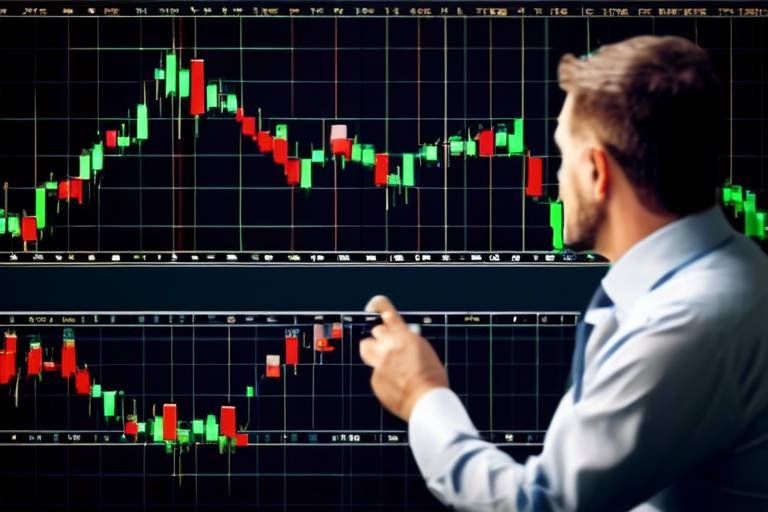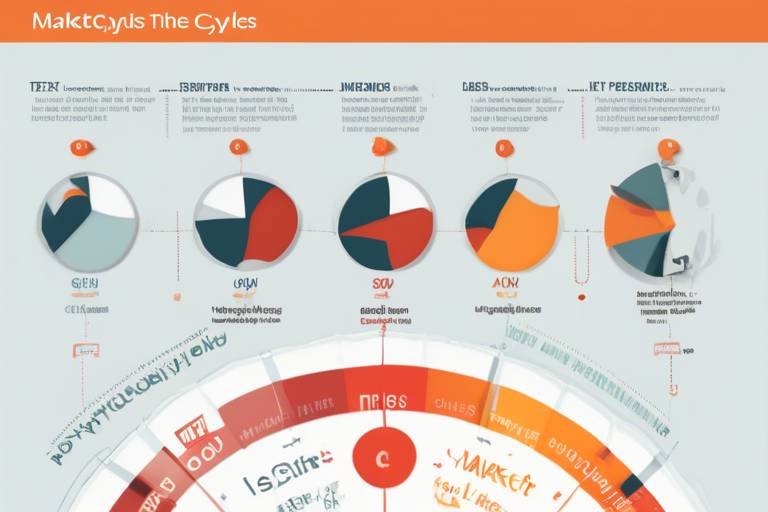How to Use Chart Patterns for Timing Your Trades
In the fast-paced world of trading, timing can be the difference between profit and loss. Understanding how to read and interpret chart patterns is crucial for traders looking to enhance their market timing skills. Chart patterns are visual representations of price movements that can indicate potential future trends. By mastering these patterns, you can make more informed decisions about when to enter or exit trades. So, how do you leverage these patterns effectively? Let’s dive in!
Chart patterns emerge from the price movements of assets over time, forming distinct shapes that traders can identify. These formations are not just random; they often reveal the market's sentiment and potential future behaviors. For instance, a pattern that indicates a reversal may suggest that the current trend is losing momentum and a shift is imminent. By recognizing these patterns, traders can gain a significant edge in predicting price movements, allowing them to act proactively rather than reactively.
There are several common chart patterns that traders frequently encounter. Each pattern has its own implications and can signal either a market reversal or continuation. Here are a few key patterns to watch for:
- Head and Shoulders
- Triangles
- Flags and Pennants
Understanding these patterns can significantly guide your trading strategy, helping you make more calculated decisions.
The head and shoulders pattern is one of the most reliable indicators of a trend reversal. It consists of three peaks: a higher peak (the head) between two lower peaks (the shoulders). This pattern often signals a potential market top, indicating that the upward momentum is fading. By identifying this formation, traders can position themselves for a timely exit, protecting their profits before a downturn occurs.
On the flip side, the inverse head and shoulders pattern suggests a potential bullish reversal. This pattern consists of three troughs, with the middle trough being the lowest. Recognizing this formation can help traders capitalize on upward price movements after a downtrend, allowing them to enter positions just as the market begins to shift in their favor.
To calculate target prices using the head and shoulders pattern, traders can measure the distance from the head to the neckline. This distance can then be projected downwards from the breakout point to estimate potential price targets. By setting realistic profit targets, traders can enhance their risk-reward ratio, ultimately leading to more successful trades.
Triangle patterns, including ascending, descending, and symmetrical triangles, represent periods of consolidation. They are characterized by converging trendlines that indicate a potential breakout. Understanding the nuances of these patterns can help traders anticipate breakout points and adjust their positions accordingly, maximizing their timing for entry or exit.
Flags and pennants are continuation patterns that suggest a brief consolidation phase before the previous trend resumes. Recognizing these patterns can provide traders with valuable opportunities to enter trades in the direction of the prevailing trend. For instance, after a strong upward movement, a flag pattern might appear, signaling that the trend is likely to continue after a short pause.
Flags are characterized by parallel trendlines that slope against the prevailing trend. Identifying these patterns can help traders pinpoint potential breakout points. For example, if a flag forms after a bullish trend, it may indicate a continuation of that trend, allowing traders to refine their entry strategies and maximize profits.
Pennants, similar to flags, are formed by converging trendlines. They typically occur after a strong price movement and indicate a brief period of consolidation. Understanding how to recognize and trade these patterns can enhance a trader's ability to capitalize on short-term price movements, leading to timely and profitable trades.
Incorporating chart patterns into your trading strategies involves combining them with other technical indicators. This integration can provide a more comprehensive view of market conditions, improving your overall timing for trades. For instance, using moving averages alongside chart patterns can help confirm potential breakouts or reversals, giving you greater confidence in your trading decisions.
- What are the most reliable chart patterns? The head and shoulders, triangles, and flags are among the most reliable patterns traders use to predict market movements.
- How can I practice identifying chart patterns? You can practice by analyzing historical charts and using demo trading accounts to apply your knowledge in real-time.
- Can chart patterns guarantee success in trading? While chart patterns can enhance your trading decisions, they are not foolproof. Always combine them with risk management strategies.

Understanding Chart Patterns
Chart patterns are like the fingerprints of the market, revealing the unique characteristics of price movements over time. Just as a detective studies clues to solve a mystery, traders analyze these patterns to predict future price movements. By recognizing these formations, traders can make informed decisions about when to enter or exit trades, much like a surfer waiting for the perfect wave to ride. Understanding chart patterns is essential for anyone looking to enhance their trading skills and improve their timing in the market.
These patterns can be broadly categorized into two types: reversal patterns and continuation patterns. Reversal patterns signal a potential change in trend direction, while continuation patterns indicate that the current trend is likely to persist. By identifying these patterns early, traders can position themselves advantageously, maximizing their chances of success.
To illustrate the significance of chart patterns, consider the following key points:
- Market Psychology: Chart patterns reflect the collective emotions and behaviors of traders. Understanding these patterns can provide insights into market psychology, helping traders gauge whether fear or greed is driving price movements.
- Timing Is Everything: The ability to recognize chart patterns allows traders to time their entries and exits more effectively. This can mean the difference between a profitable trade and a missed opportunity.
- Risk Management: By using chart patterns to inform trading decisions, traders can set more accurate stop-loss and take-profit levels, enhancing their risk management strategies.
It's important to remember that while chart patterns can provide valuable insights, they are not foolproof. Just like a weather forecast, they can help predict trends, but they are not guarantees. Therefore, combining chart patterns with other technical indicators and fundamental analysis can create a more robust trading strategy. This holistic approach is akin to a chef using various ingredients to create a delicious dish, ensuring that the final outcome is both satisfying and successful.
In conclusion, understanding chart patterns is a vital skill for traders looking to enhance their timing in the market. By recognizing these formations and their implications, traders can make more informed decisions and improve their chances of success. As you continue your trading journey, keep an eye on these patterns, and remember that the market is always full of surprises!
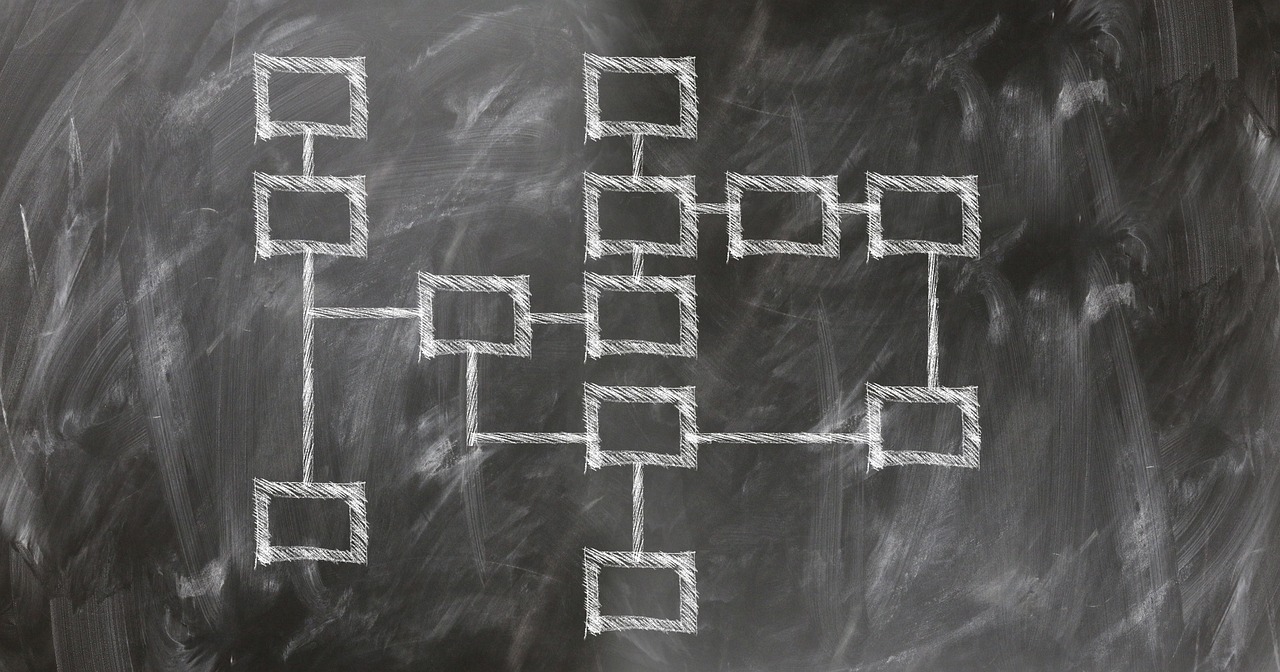
Common Chart Patterns
When it comes to trading, understanding chart patterns is like having a secret map that leads to treasure. These patterns serve as visual cues that can help traders make informed decisions about when to enter or exit the market. There are several common chart patterns that traders should be aware of, each with its own unique characteristics and implications for future price movements. Recognizing these patterns can significantly enhance your trading strategy and improve your timing.
Among the most prominent chart patterns are the head and shoulders, triangles, and flags. Each of these patterns can signal potential market reversals or continuations, guiding traders in their decision-making process. For instance, the head and shoulders pattern is often seen as a reliable indicator of a trend reversal, while triangle patterns can indicate periods of consolidation, hinting at possible breakout points. Flags, on the other hand, suggest a brief pause before the previous trend resumes.
Let’s dive a little deeper into these patterns:
| Chart Pattern | Description | Market Implication |
|---|---|---|
| Head and Shoulders | A reversal pattern indicating a change in trend direction. | Potential market top or bottom. |
| Triangles | Consolidation pattern formed by converging trendlines. | Indicates potential breakout points. |
| Flags | Continuation pattern characterized by parallel trendlines. | Signals a brief consolidation before trend continuation. |
Understanding these patterns is crucial for traders looking to enhance their market timing. For example, the head and shoulders pattern can help you identify potential market tops, allowing you to exit trades at the right moment. Conversely, recognizing triangle patterns can alert you to upcoming breakouts, giving you the chance to position yourself advantageously. Flags can also provide excellent entry points in the direction of the prevailing trend, making them invaluable for short-term traders.
In summary, familiarizing yourself with these common chart patterns can be a game-changer in your trading journey. Not only do they provide insight into potential market movements, but they also empower you to make more confident and informed trading decisions. So, next time you analyze a chart, keep an eye out for these patterns—they might just lead you to your next successful trade!

Head and Shoulders
The pattern is one of the most recognized and reliable indicators of trend reversal in the trading world. Imagine you're climbing a mountain, reaching a peak (the head), then descending slightly before hitting two smaller peaks (the shoulders) on either side. This formation signals to traders that the current trend is losing momentum and that a reversal may be imminent. Understanding this pattern is crucial for traders looking to identify potential market tops and bottoms, allowing for timely entries and exits in their trades.
To visualize the head and shoulders pattern, think of it as a mountain range, where the highest peak represents the head and the two lower peaks symbolize the shoulders. The pattern typically forms after an uptrend, indicating that the price is about to reverse into a downtrend. The key components of the head and shoulders pattern include:
- Left Shoulder: The price rises to a peak and then declines.
- Head: The price rises again, surpassing the previous peak, and then falls again.
- Right Shoulder: The price rises a third time but fails to reach the height of the head, followed by a decline.
- Neckline: This is the support level that connects the lows of the left shoulder and the head, and it is crucial for confirming the pattern.
When the price breaks below the neckline after forming the right shoulder, it serves as a strong signal for traders to enter a short position. This moment can be likened to a dam breaking; once the support is breached, the price can cascade downward, often with significant momentum. Traders often look for additional confirmation through volume spikes or other technical indicators to enhance the reliability of this signal.
Moreover, understanding the psychology behind this pattern can give traders an edge. The left shoulder represents initial profit-taking, the head signifies greed, and the right shoulder shows the struggle between buyers and sellers. When sellers finally gain the upper hand, it’s time for traders to act swiftly. This pattern not only helps in identifying potential reversals but also aids in setting stop-loss orders, as the area just above the right shoulder can serve as a protective barrier against unexpected price movements.
In conclusion, mastering the head and shoulders pattern can significantly enhance your trading strategy. It’s not just about recognizing the formation; it’s about understanding the market sentiment that drives these price movements. By incorporating this pattern into your trading toolkit, you can improve your timing and decision-making, leading to more successful trades.

Inverse Head and Shoulders
The inverse head and shoulders pattern is a powerful formation that traders often look for when anticipating a bullish reversal in the market. This pattern is characterized by three troughs: the first trough (the left shoulder), the second and deepest trough (the head), and the third trough (the right shoulder), which is typically higher than the head. The formation resembles an upside-down head and shoulders, hence the name. Recognizing this pattern can be a game-changer for traders, as it signals a potential shift in momentum from bearish to bullish.
To identify the inverse head and shoulders pattern effectively, traders should look for the following key elements:
- Left Shoulder: A decline in price followed by a rebound.
- Head: A deeper decline followed by another rebound, reaching a lower point than the left shoulder.
- Right Shoulder: A final decline that is shallower than the head, followed by a rebound that approaches the neckline.
- Neckline: A resistance level formed by connecting the peaks of the left and right shoulders.
Once the pattern is complete, traders can anticipate a breakout above the neckline, which often leads to a substantial price increase. This breakout is usually accompanied by increased trading volume, further confirming the bullish sentiment. The potential profit target can be calculated by measuring the distance from the head to the neckline and projecting that distance upward from the breakout point. This method allows traders to set realistic profit expectations and manage their risk effectively.
Incorporating the inverse head and shoulders pattern into your trading strategy can enhance your ability to time entries and exits. However, it's crucial to remember that while this pattern is a reliable indicator, it should not be used in isolation. Combining it with other technical indicators, such as volume analysis or moving averages, can provide a more comprehensive view of the market and improve your overall trading success.
Ultimately, the inverse head and shoulders pattern serves as a reminder that the market is constantly evolving. By staying vigilant and recognizing these patterns, traders can position themselves to take advantage of significant price movements and enhance their trading strategies.
- What is the significance of the inverse head and shoulders pattern?
This pattern indicates a potential bullish reversal, helping traders identify opportunities to enter long positions.
- How can I confirm the breakout from the neckline?
Look for increased trading volume and a close above the neckline to confirm the breakout.
- Can I use the inverse head and shoulders pattern in different time frames?
Yes, this pattern can be applied across various time frames, but the effectiveness may vary.
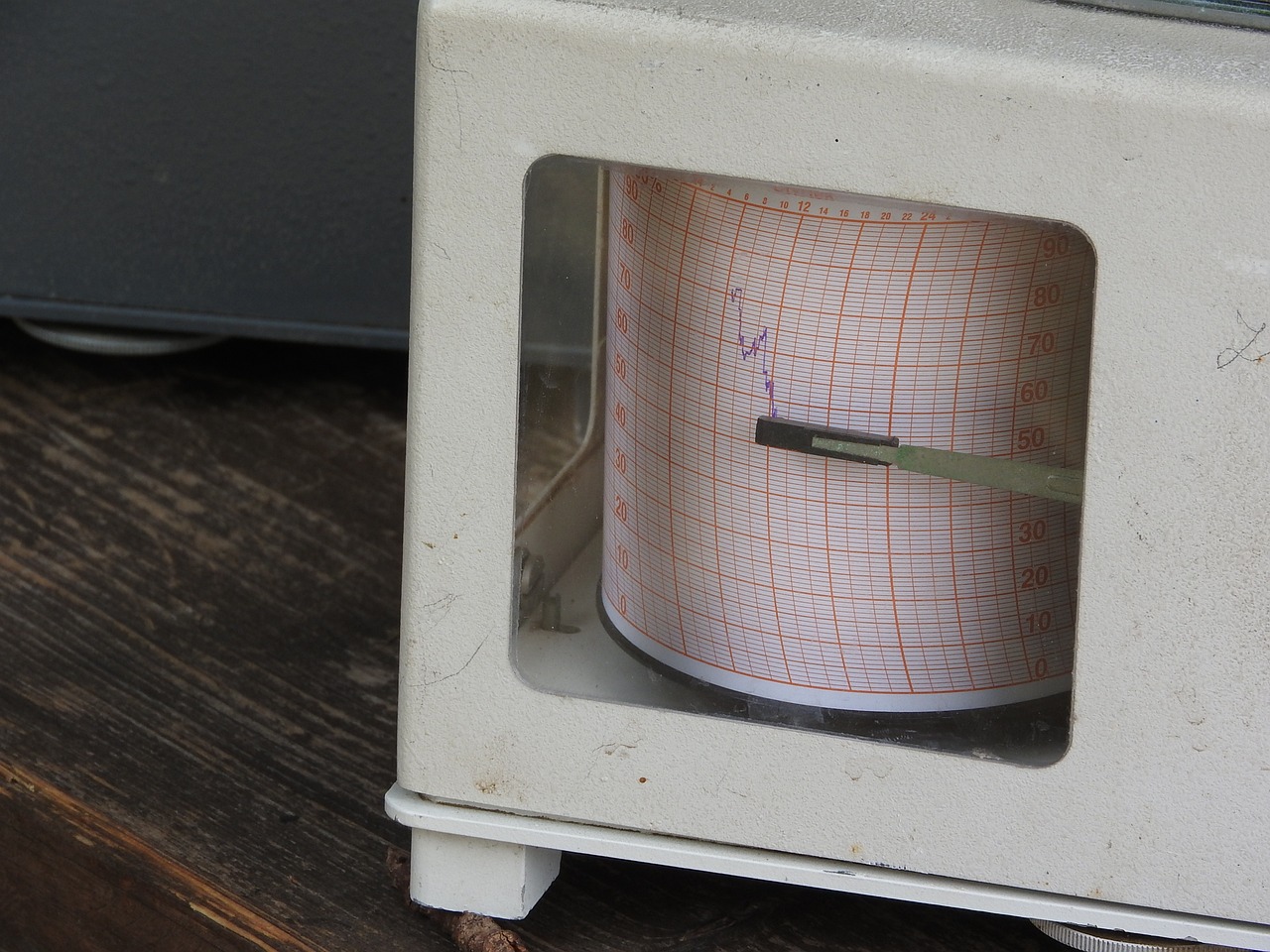
Measuring Target Prices
When it comes to trading, setting realistic target prices is crucial for maximizing profits and minimizing risks. One effective method for calculating these targets is by analyzing the head and shoulders pattern. This pattern consists of three peaks: the left shoulder, the head, and the right shoulder, with a neckline that connects the lows between the shoulders. To measure target prices using this pattern, traders can follow a straightforward approach that involves a few simple steps.
First, identify the highest point of the head and the lowest point of the neckline. The distance between these two points is essential, as it represents the potential price movement. Once this distance is established, it can be used to project target prices by subtracting this measurement from the neckline in the case of a bearish reversal or adding it to the neckline for a bullish reversal. This method provides a clear indication of where the price may head after the pattern completes.
To illustrate this concept, consider the following table that summarizes the steps for measuring target prices:
| Step | Description |
|---|---|
| 1 | Identify the highest point of the head. |
| 2 | Determine the lowest point of the neckline. |
| 3 | Calculate the distance between the head and the neckline. |
| 4 | Project target prices by applying this distance above or below the neckline. |
By following these steps, traders can set realistic profit targets that align with market expectations. However, it’s important to remember that market conditions can change rapidly, and no method is foolproof. Therefore, combining this technique with other indicators, such as volume analysis or momentum indicators, can enhance the reliability of the target price projections.
In summary, measuring target prices based on the head and shoulders pattern is a valuable tool for traders looking to optimize their trading strategies. It not only aids in setting clear profit objectives but also helps traders maintain discipline and avoid emotional decision-making during trades.
- What is the head and shoulders pattern?
The head and shoulders pattern is a reversal pattern that indicates a change in trend direction, typically signaling a bearish reversal after an uptrend. - How can I identify the neckline in the head and shoulders pattern?
The neckline is formed by connecting the lows of the two shoulders. It serves as a crucial level of support or resistance. - Can I use other technical indicators along with chart patterns?
Absolutely! Combining chart patterns with other indicators like RSI or moving averages can provide a more comprehensive view of market conditions.

Triangles
Triangles are fascinating chart patterns that emerge during periods of price consolidation, often indicating a potential breakout. They come in three main varieties: ascending triangles, descending triangles, and symmetrical triangles. Each type has its own unique characteristics and implications for traders. Understanding these patterns can be a game-changer in timing your trades effectively.
Firstly, let's dive into the ascending triangle. This pattern is typically bullish in nature, characterized by a flat upper trendline and a rising lower trendline. The price action within this triangle suggests that buyers are gaining strength, pushing prices higher, while sellers are unable to push prices below the flat resistance level. As the price approaches the apex of the triangle, the tension builds, and a breakout is often imminent. Traders often look for confirmation through increased volume, which can signal that the upward momentum is likely to continue.
On the flip side, we have the descending triangle. This pattern is generally considered bearish and is formed by a flat lower trendline and a descending upper trendline. It indicates that sellers are becoming more aggressive, driving prices lower, while buyers are struggling to maintain support at the lower trendline. A breakout below this support level can lead to significant downward movement, presenting a lucrative opportunity for traders who are prepared to act. Again, volume plays a critical role here; a surge in volume on the breakout can validate the move and signal a strong downward trend.
Lastly, let’s talk about the symmetrical triangle, which is a bit more nuanced. This pattern is formed by two converging trendlines, one sloping upwards and the other sloping downwards. It represents a period of indecision in the market, where buyers and sellers are in a tug-of-war. The breakout direction can be either bullish or bearish, making it essential for traders to be on high alert for volume spikes that can indicate the breakout direction. The key here is patience; waiting for a confirmed breakout is crucial to avoid false signals.
To summarize, recognizing triangle patterns can significantly enhance your trading strategy. Here’s a quick reference table:
| Pattern Type | Characteristics | Implication |
|---|---|---|
| Ascending Triangle | Flat upper trendline, rising lower trendline | Potential bullish breakout |
| Descending Triangle | Flat lower trendline, descending upper trendline | Potential bearish breakout |
| Symmetrical Triangle | Converging trendlines | Indecision, potential breakout in either direction |
Incorporating these triangle patterns into your trading strategy can provide you with a clearer picture of market dynamics. Whether you're looking to capitalize on a bullish breakout or prepare for a bearish downturn, understanding how to read these patterns can help you make more informed decisions. So, the next time you see a triangle forming on your chart, remember: it's not just a shape; it's a potential opportunity waiting to unfold!

Flags and Pennants
Flags and pennants are fascinating chart patterns that traders often encounter on their journey through the financial markets. These patterns are not just random squiggles on a chart; they serve as powerful indicators of potential continuation in the direction of the prevailing trend. When you spot a flag or pennant, you're essentially looking at a brief pause in the market's momentum, which can give you a golden opportunity to jump back into the trend.
To understand flags and pennants better, let's break down their characteristics. Flags typically appear as small rectangles that slope against the main trend. Imagine a flag fluttering in the wind; it momentarily stands still before the wind picks up again. This is akin to how price consolidates before breaking out in the original direction. On the other hand, pennants look like small triangles that form when the price converges between two trendlines. Think of it as a triangle being drawn on a canvas, where the price action is the pencil drawing it. Both patterns signal that the market is taking a breather before it continues its journey.
Recognizing these patterns is crucial for traders. When you see a flag, it usually means that the market is preparing for a continuation of the prior trend. The breakout typically occurs in the same direction as the trend before the consolidation. For instance, if the price has been moving upwards, a flag pattern appearing during this uptrend suggests that the price will likely break out upwards once the consolidation phase is over.
Pennants, while similar, offer a slightly different flavor. They indicate a brief pause after a strong price movement, often leading to a breakout. The key to trading these patterns lies in volume; a significant increase in volume during the breakout can confirm the strength of the move. Therefore, always keep an eye on the volume when trading flags and pennants!
Here’s a quick visual representation of flags and pennants:
| Pattern | Description | Breakout Direction |
|---|---|---|
| Flag | Rectangular shape that slopes against the prevailing trend. | Same direction as the trend before consolidation. |
| Pennant | Small triangle formed by converging trendlines. | Same direction as the preceding price movement. |
Incorporating flags and pennants into your trading strategy can significantly enhance your timing and decision-making process. When you identify these patterns, consider using them in conjunction with other technical indicators, such as moving averages or RSI, to confirm signals and improve your chances of success. Remember, trading is not just about identifying patterns; it's about understanding market psychology and the underlying forces at play.
- What is the difference between flags and pennants? Flags are rectangular shapes that slope against the trend, while pennants are formed by converging trendlines.
- How can I confirm a breakout from a flag or pennant? Look for an increase in volume during the breakout; this often indicates the strength of the move.
- Can I use flags and pennants in any market? Yes, these patterns can be found in various markets, including stocks, forex, and commodities.

Identifying Flags
Identifying flags in trading is akin to spotting a hidden treasure map; once you know what to look for, the rewards can be significant. Flags are continuation patterns that typically form after a strong price movement, representing a brief pause before the trend resumes. To effectively spot these patterns, traders should focus on a few key characteristics that define flags.
Firstly, flags are characterized by their parallel trendlines that slope against the prevailing trend. This means that if the market is in an uptrend, the flag will slope downward, and vice versa for a downtrend. The importance of this slope cannot be overstated; it indicates that the price is consolidating before making its next move. Traders should look for a clear price movement preceding the formation of the flag, as this initial surge sets the stage for the continuation pattern.
Next, the duration of the flag is crucial. Flags typically last from a few days to a couple of weeks, allowing traders enough time to analyze the pattern without it being too drawn out. The shorter the duration, the more significant the preceding price movement tends to be. For instance, if a stock has a sharp increase followed by a flag formation lasting just a few days, it often signals a strong likelihood of continuation in the same direction.
Another essential element to consider is the volume accompanying the formation of the flag. During the flag's development, volume should ideally decrease. This declining volume signifies a temporary pause in trading activity, which is common as traders await the next big move. However, when the price breaks out of the flag pattern, an increase in volume is a strong confirmation that the trend is set to continue. This pattern of volume can help traders refine their entry strategies, ensuring they are not caught off guard by sudden market movements.
To summarize, here are the key points to remember when identifying flags:
- Look for parallel trendlines that slope against the prevailing trend.
- Ensure the flag lasts from a few days to a couple of weeks.
- Observe volume trends, noting a decrease during the flag formation and an increase upon breakout.
By keeping these characteristics in mind, traders can sharpen their skills in identifying flags and enhance their trading strategies. Remember, recognizing flags is just one part of the puzzle; combining this knowledge with other technical indicators will provide a more comprehensive view of market conditions. So, the next time you’re analyzing a chart, keep an eye out for those flags—they might just lead you to your next profitable trade!
- What are flags in trading? Flags are continuation patterns that indicate a brief consolidation before the price resumes its previous trend.
- How can I identify a flag pattern? Look for parallel trendlines that slope against the prevailing trend, a duration of a few days to weeks, and a decrease in volume during formation.
- Why is volume important in identifying flags? Volume helps confirm the strength of the breakout; a decrease during the flag and an increase during the breakout signal a strong continuation.

Recognizing Pennants
Pennants are fascinating chart patterns that often signal a brief pause in the market before the previous trend resumes. Think of them as the calm before the storm—a moment of consolidation where traders are holding their breath, waiting for the next big move. Recognizing these patterns can be a game-changer for traders looking to capitalize on short-term price movements.
To identify a pennant, you’ll want to look for a few key characteristics. First, a pennant forms after a significant price movement, which can be either upward or downward. This initial surge is what creates the momentum that traders are eager to ride. Next, the price action will begin to consolidate, leading to the formation of converging trendlines. These trendlines will slope towards each other, creating a small triangular shape that resembles a pennant. It’s essential to remember that the duration of this consolidation phase is typically short-lived, often lasting from a few days to a couple of weeks.
Here’s a quick breakdown of how to spot a pennant:
- Initial Movement: Look for a strong price movement before the pennant forms.
- Converging Trendlines: Identify two trendlines that converge, creating a triangular shape.
- Volume Analysis: Notice a decrease in trading volume during the consolidation phase, which often precedes a breakout.
Once you’ve identified a pennant, the next step is to anticipate the breakout direction. Typically, the breakout occurs in the same direction as the previous trend. For instance, if the price surged upwards before forming the pennant, traders should be on the lookout for a breakout to the upside. Conversely, if the price movement was downward, the breakout may likely occur downwards. This is where your timing becomes crucial; entering the trade just before the breakout can lead to significant profits.
Moreover, it’s essential to keep an eye on volume during the breakout. A surge in volume can confirm the strength of the breakout, providing additional confidence in your trade. If the breakout occurs with low volume, it could indicate a false breakout, which is a risk you want to avoid. Therefore, combining your pennant recognition with volume analysis can significantly enhance your trading strategy.
In summary, recognizing pennants involves understanding their formation, anticipating breakout directions, and analyzing volume. By mastering these skills, traders can effectively time their entries and exits, maximizing their potential for profit in the ever-changing market landscape.
- What is the difference between a pennant and a flag?
Pennants are characterized by converging trendlines, while flags have parallel trendlines. Both indicate consolidation before a breakout, but their shapes and formations differ.
- How do I trade a pennant pattern?
To trade a pennant, wait for the breakout to occur in the direction of the previous trend. Enter the trade with a stop-loss order to manage risk effectively.
- Can pennants form in any market?
Yes, pennants can form in any market, including stocks, forex, and cryptocurrencies. They are a universal pattern that traders can use across different assets.
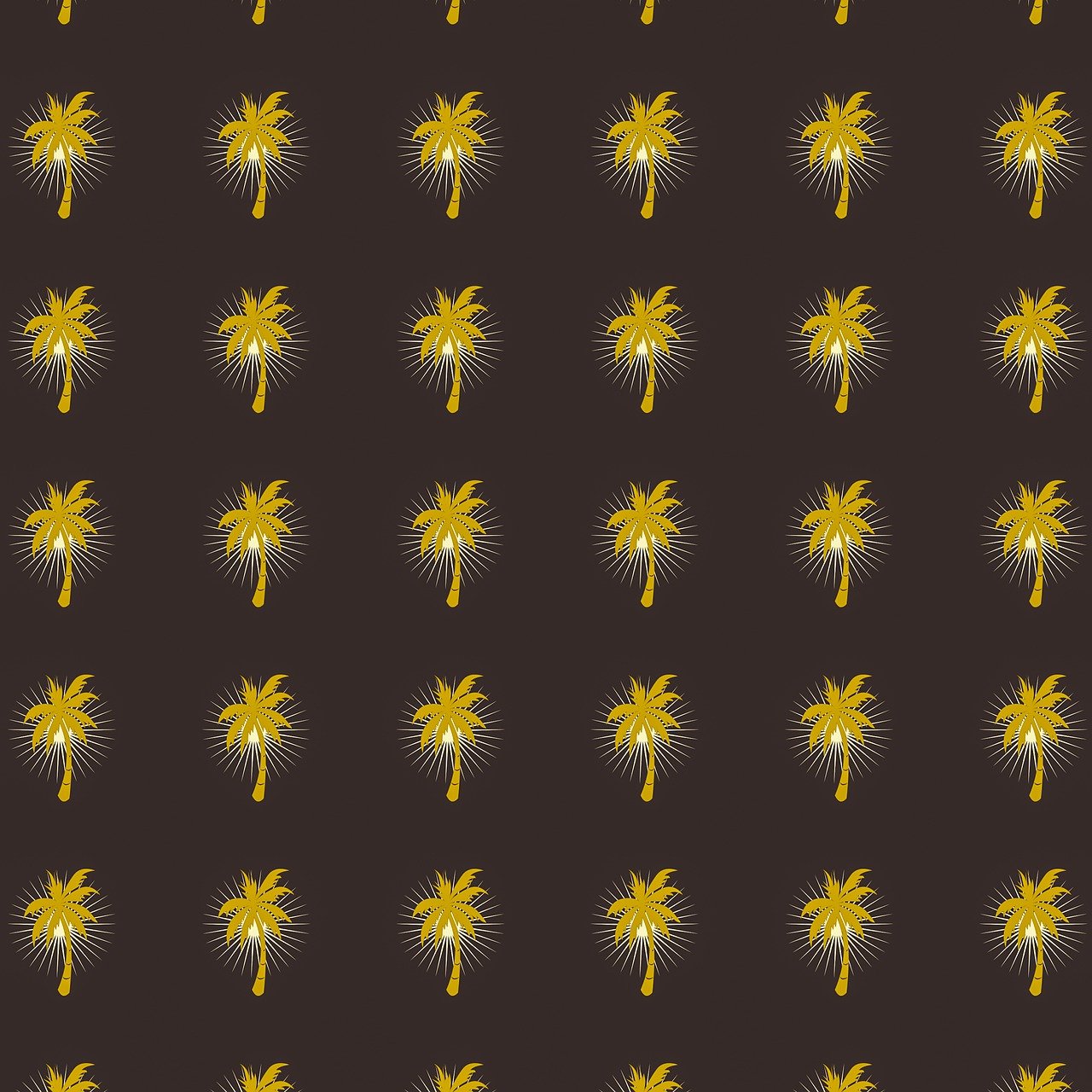
Integrating Chart Patterns into Trading Strategies
Integrating chart patterns into trading strategies is like adding spices to a dish; the right combination can elevate the flavor and make your trading experience more rewarding. When traders combine chart patterns with other technical indicators, they gain a more nuanced understanding of market dynamics. This holistic approach not only enhances timing but also increases the probability of successful trades.
To effectively integrate chart patterns, traders should first familiarize themselves with a variety of technical indicators, such as moving averages, Relative Strength Index (RSI), and MACD (Moving Average Convergence Divergence). These indicators can serve as confirmation tools, validating the signals generated by chart patterns. For example, if a trader identifies a head and shoulders pattern suggesting a bearish reversal, they might look for a corresponding bearish signal from the RSI, which could indicate overbought conditions.
Moreover, understanding market context is crucial. Chart patterns do not exist in a vacuum; they are influenced by broader market trends and news events. For instance, if a triangle pattern forms during a significant economic announcement, the breakout direction may be more pronounced. Traders should always stay updated on economic calendars and major news releases, as these can impact the reliability of chart patterns.
Another effective strategy is to implement risk management techniques alongside chart patterns. This involves setting stop-loss orders and determining position sizes based on the volatility indicated by the chart patterns. A well-placed stop-loss can protect against unexpected market moves, while a calculated position size can ensure that no single trade significantly impacts the trader's capital.
Here’s a simple table to illustrate how different chart patterns can be combined with other indicators:
| Chart Pattern | Confirmation Indicator | Suggested Action |
|---|---|---|
| Head and Shoulders | RSI Divergence | Sell |
| Inverse Head and Shoulders | MACD Bullish Crossover | Buy |
| Symmetrical Triangle | Volume Spike | Buy/Sell on Breakout |
| Flags | Moving Average Cross | Buy in Direction of Trend |
Additionally, backtesting is an invaluable step in integrating chart patterns into trading strategies. By reviewing historical price data, traders can assess how well their chosen patterns and indicators would have performed in various market conditions. This process helps refine strategies and boosts confidence in their trading decisions.
In conclusion, integrating chart patterns into trading strategies is a powerful way to enhance trading performance. By combining these patterns with technical indicators, staying aware of market context, implementing risk management, and backtesting strategies, traders can significantly improve their timing and decision-making process. Remember, the goal is to create a cohesive strategy that aligns with your trading style and risk tolerance.
- What are chart patterns? Chart patterns are formations created by the price movements of assets on a chart, helping traders predict future price movements.
- How can I identify chart patterns? Traders can identify chart patterns by analyzing price movements and looking for specific formations like head and shoulders, triangles, and flags.
- What is the importance of combining chart patterns with indicators? Combining chart patterns with indicators helps validate signals and improves the accuracy of trading decisions.
- Can I use chart patterns for long-term trading? Yes, chart patterns can be used for both short-term and long-term trading strategies, depending on the trader's goals.
Frequently Asked Questions
- What are chart patterns?
Chart patterns are formations that emerge from the price movements of assets on a chart. They serve as visual cues for traders, helping them predict potential future price movements and make informed decisions about when to enter or exit trades.
- How can I identify a head and shoulders pattern?
The head and shoulders pattern consists of three peaks: a higher peak (the head) between two lower peaks (the shoulders). This pattern typically indicates a reversal in the trend, signaling traders that it might be time to exit a long position or consider entering a short position.
- What does an inverse head and shoulders pattern indicate?
An inverse head and shoulders pattern is the opposite of the regular head and shoulders pattern. It suggests a potential bullish reversal, meaning that after a downtrend, the price may start to rise. Recognizing this pattern can help traders position themselves for upward price movements.
- How do I measure target prices using the head and shoulders pattern?
To calculate target prices based on the head and shoulders pattern, measure the distance from the head to the neckline. This measurement can then be projected downward from the breakout point to set realistic profit targets for your trades.
- What are triangle patterns and how do they work?
Triangle patterns, which include ascending, descending, and symmetrical triangles, signify periods of consolidation in the market. By understanding these patterns, traders can anticipate potential breakout points and adjust their positions for optimal timing in their trades.
- What is the difference between flags and pennants?
Flags are characterized by parallel trendlines that slope against the prevailing trend, while pennants are formed by converging trendlines. Both patterns indicate brief consolidation before the previous trend continues, providing traders with opportunities to enter trades in the direction of the prevailing trend.
- How can I integrate chart patterns into my trading strategy?
Integrating chart patterns into your trading strategy involves combining them with other technical indicators, such as moving averages or RSI. This holistic approach can give you a clearer view of market conditions, enhancing your timing and decision-making for trades.

